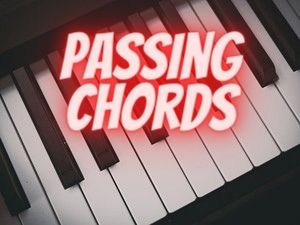The following two tabs change content below.


Greg Lee
Hi, my name is Greg Lee. I'm the creator of the Color Score Professional/Visual Chord Learning System. I love to share ideas and concepts about piano and keyboard playing in all styles of music. I believe the key to learning is having fun and making complicated things simple with visual tools and illustrations.
Latest posts by Greg Lee (see all)
- What is a minor/Major 7 Chord? - October 26, 2023
- 7 Chord Substitutions that Professionals Use - October 19, 2023
- 5 Simple Chord Tricks to Sound Amazing - October 5, 2023


 are good to have. It makes chord progressions easy to remember. But when they're too predictable, chord progressions can become monotonous. I want to share with you 5 easy passing chords you can use now.
are good to have. It makes chord progressions easy to remember. But when they're too predictable, chord progressions can become monotonous. I want to share with you 5 easy passing chords you can use now. Our passing chord is a slash chord as an A Major over C sharp. This is a Major triad over the 3rd and works well as a passing chord when you're moving to a minor chord.
Our passing chord is a slash chord as an A Major over C sharp. This is a Major triad over the 3rd and works well as a passing chord when you're moving to a minor chord. From there, we move to D minor.
From there, we move to D minor.


 It then resolves to D minor 7.
It then resolves to D minor 7.
 The passing chord succeeds it as an A7/F Sharp (another slash chord). This is a dominant 7th chord which has a 13th tone in the bass. This makes it an extended chord that is out of character with other chords in the progression. But as in the previous chord progression, it has tones that are common to the other chords.
The passing chord succeeds it as an A7/F Sharp (another slash chord). This is a dominant 7th chord which has a 13th tone in the bass. This makes it an extended chord that is out of character with other chords in the progression. But as in the previous chord progression, it has tones that are common to the other chords. The progression then moves to a C/G chord and then to G Major as a resolution.
The progression then moves to a C/G chord and then to G Major as a resolution.



 This resolves into a D Major/A chord.
This resolves into a D Major/A chord. The progression concludes at an E7 chord.
The progression concludes at an E7 chord.
 The passing chord succeeds it as a simple B flat Major chord.
The passing chord succeeds it as a simple B flat Major chord.
 We end the chord progression with C minor 9.
We end the chord progression with C minor 9. In order to benefit from this article, it's helpful to have an understanding of
In order to benefit from this article, it's helpful to have an understanding of 